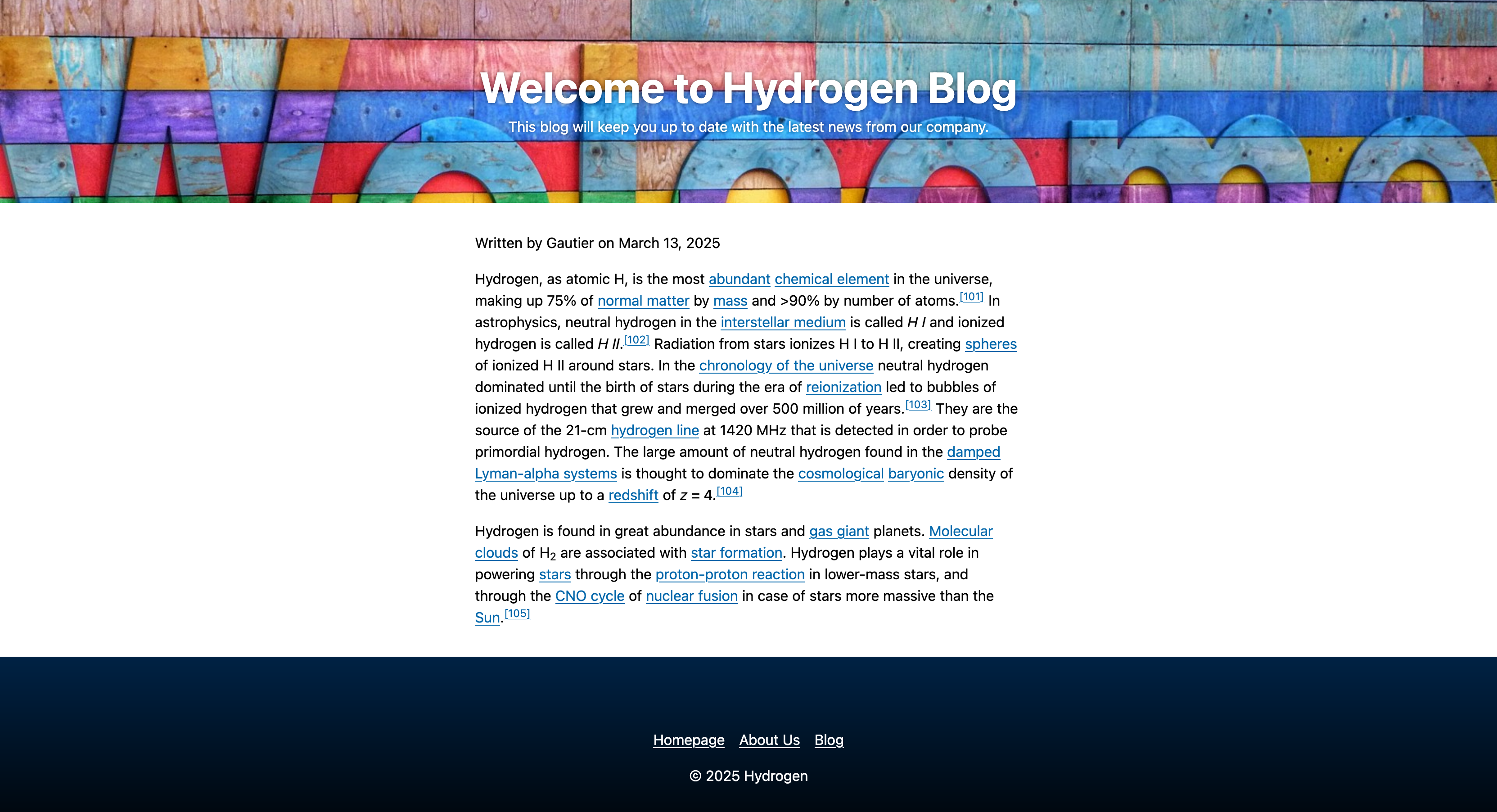View Content in Full Page
The goal of this section is to render a full-page view of a content node. We'll continue with our blog example, and instead of a 404 page, we'll create a page to display a single blog post.
Full Page Views
Full page renders leverage another jahiaComponent type: template. A template is like a view but for a full-page resource.
Templates are a rather legacy feature in Jahia, dating back to the days when Jahia had a visual template builder. This distinction between view and templates makes less sense in a code editor, but it's still there. As a rule of thumb, we'll use views to render nodes and templates to create page structures.
The project template contains a file named src/templates/MainResource/default.server.tsx that will forward all full-page requests to a view of the same node named fullPage:
import { jahiaComponent, Render } from "@jahia/javascript-modules-library";
import { Layout } from "../Layout.jsx";
jahiaComponent(
{
componentType: "template",
nodeType: "jmix:mainResource",
},
({ "jcr:title": title }, { currentNode }) => (
<Layout title={title}>
<Render node={currentNode} view="fullPage" />
</Layout>
),
);Thus, we will implement a fullPage view for our BlogPost node type. Create a new file named src/components/BlogPost/fullPage.server.tsx:
import { AbsoluteArea, jahiaComponent } from "@jahia/javascript-modules-library";
import type { Props } from "./types.js";
import classes from "./component.module.css";
import { SmallHeroSection } from "../Hero/Section/small.server.jsx";
jahiaComponent(
{
componentType: "view",
nodeType: "hydrogen:blogPost",
displayName: "Blog Post",
name: "fullPage",
},
(
{ "jcr:title": title, subtitle, authors, publicationDate, cover, body }: Props,
{ currentResource, renderContext },
) => (
<>
<SmallHeroSection title={title} subtitle={subtitle} background={cover} />
<main className={classes.main}>
<header>
<p>
Written {authors && authors.length > 0 && <>by {authors.join(", ")} </>}
{publicationDate && (
<>
on{" "}
{new Date(publicationDate).toLocaleDateString(
currentResource.getLocale().toString(),
{ dateStyle: "long" },
)}
</>
)}
</p>
</header>
<article dangerouslySetInnerHTML={{ __html: body }} />
</main>
<AbsoluteArea name="footer" parent={renderContext.getSite()} nodeType="hydrogen:footer" />
</>
),
);You can also update src/components/BlogPost/component.module.css to include a new class:
.main {
margin: 2rem auto;
padding-inline: 1rem;
max-width: 40rem;
}This code contains of lot of things. Here are the most notable parts:
-
We reuse
SmallHeroSectionto render a hero section at the top of the page. To make it possible, you need to updateHero/Section/small.server.jsxwith the following statement:export const SmallHeroSection = jahiaComponent({ // ... });The
jahiaComponentfunction returns its second argument, the React component, to make it possible to reuse it in other components.We forward props to the
SmallHeroSectioncomponent, making it a very flexible component. -
We used
dangerouslySetInnerHTMLto render the body of the blog post. Because the body is a rich text field, we can't render it as a string, as it would display HTML tags as<p>content</p>instead of rendering the content as HTML. This is a security risk, as it allows for XSS attacks: that's why editing content is restricted to trusted users. -
We used
<AbsoluteArea name="footer" parent={renderContext.getSite()} nodeType="hydrogen:footer" />in the view to render the footer. This will display the footer component at the bottom of all blog posts.

Building URLs
Wouldn't it be nice if at the end of the article we had a way to get back to the blog list? We can achieve this by building a URL to the blog list page.
Update your src/components/BlogPost/fullPage.server.tsx file to include the following hook:
import { buildNodeUrl } from "@jahia/javascript-modules-library";This buildNodeUrl function will transform a reference to a JCR node into a fully resolved URL. The node in question is renderContext.getSite().getNode("blog"): it resolves to /sites/<site key>/blog, where blog is the page listing all blog posts. If you have a different structure, you can adjust the path accordingly.
From this node, we can build a URL to the blog list page:
<article dangerouslySetInnerHTML={{ __html: body }} />
<footer>
<p>
<a href={buildNodeUrl(renderContext.getSite().getNode("blog"))}>Back to blog home</a>
</p>
</footer>
// ...Apart from a node path, the buildNodeUrl helper takes other option parameters:
extensionis the file extension to append to the URL. It defaults to.htmlwhen not provided.languageis the language to use to build the URL. It defaults to the current language.modecan beedit,previeworliveto create URLs for different modes. It defaults to the current mode.parametersis an object of key-value pairs to append as query parameters to the URL.
In JCR, everything is a node, i.e. an entity of a tree designated by a path. The type of a node gives it a specific behavior:
- A
jnt:contentnode is a content node, like a Hero section or a blog post. It is rendered by a view. - A
jnt:pagenode is a page node, the Home page or the About Us page. It is rendered by a template. - A
jnt:virtualsitenode is a site node, the root of a site. - A
jnt:filenode is a file node, like an image or a PDF. You can upload files to Jahia and reference them in your content.
There is a lot more to learn about URL building and JCR exploration, and it's the topic of the next section.